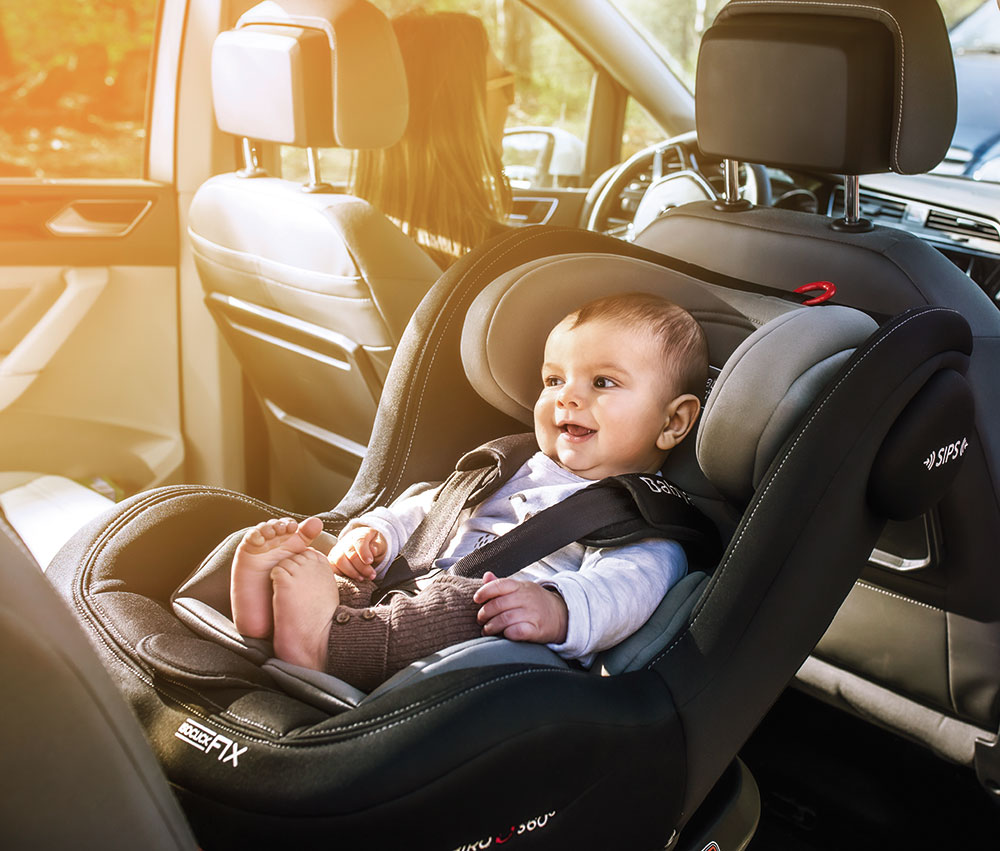This website uses cookies so that we can provide you with the best user experience possible. Cookie information is stored in your browser and performs functions such as recognising you when you return to our website and helping our team to understand which sections of the website you find most interesting and useful.
Security advice
Travel rearward facing
When it’s time to install your child’s car seat in the car, it is normal that you may have last minute doubts about how to do it. You may also feel frustrated that the car seat is not installed in correct safety conditions.
Don’t worry, because that’s why we want to help you with this guide where you’ll learn about the benefits of travelling rear facing and the best tips for getting the most out of your child’s car seat, from the recommended time your child can travel in the seat or when to switch to the rear-facing position.

Extend the rearward-facing travel position as long as possible.
Multiple safety benefits are proven, because when the child is travelling rearward facing, the seat spreads the forces better in the event of a frontal collision.
Babies and toddlers do not have fully developed neck bones and muscles, so they are less able to withstand the stress of a frontal impact. Riding rearward facing offers greater protection for the child’s head, neck and spine.
What do the regulations say?
There is no specific age from which a child can travel in the forward-facing position. According to the law, you can find seats approved under two different standards, ECE R44/04 and R129. This may cause some confusion and is one of the reasons why you will find a wide variety of seats with different ranges of use in the rearward-facing position.
Don’t worry because you only need to check that the car seat you choose belongs to one of these two approvals, as both are valid and in force.
Below, we briefly explain the differences between the two types of approvals to make it a little clearer for you.
Regulation R44/04
- It establishes a measurement system based on the weight of the child.
- It indicates that children must travel rearward facing at least until they are 9 kg (approximately 9 months).
At Babyauto, the vast majority of our car seats
are approved under this standard, such as the Sving fix, Biro D fix or Rodia Fix so that your child can travel in the opposite direction of travel up to 18 kg (approximately 4 years old).
Regulation R129
- R129 (isize) is the most recent standard and is based on child’s height.
- The measurement is expressed in centimetres, similar to the way our children’s clothes are sized.
- In order to prevent children from travelling in the forward-facing position at an early age, i-size rearward facing is extended to 15 months (approximately 76 cm in height).
If you need more range, you can choose from
our selection of i-size seats. Tekie i-size, Otto or Ronda i-size seats, which allow you to reach up to 105cm in height (approximately 4 years).
Travelling rear facing when
the child grows
We know that when child is younger, it has enough space to travel comfortably, but what happens when it starts to grow and needs more legroom?
This is a question that many parents ask themselves and that should not worry you too much.
We advise you to apply common sense. In other words, if your child is older but can cross his or her legs without any problem, or extend them over the backrest, it means that he or she can travel comfortably. If, on the other hand, you notice that the child moves around too much, or tries to find another position that could dislodge the harness, it is very likely that he/she is uncomfortable. In this case, you may want to consider changing the seat position.

